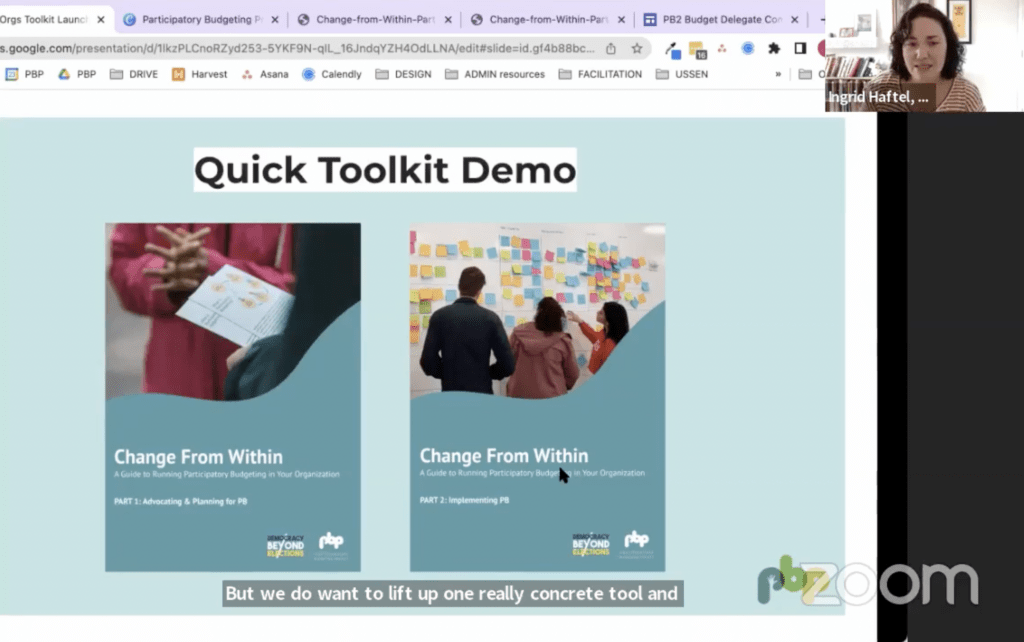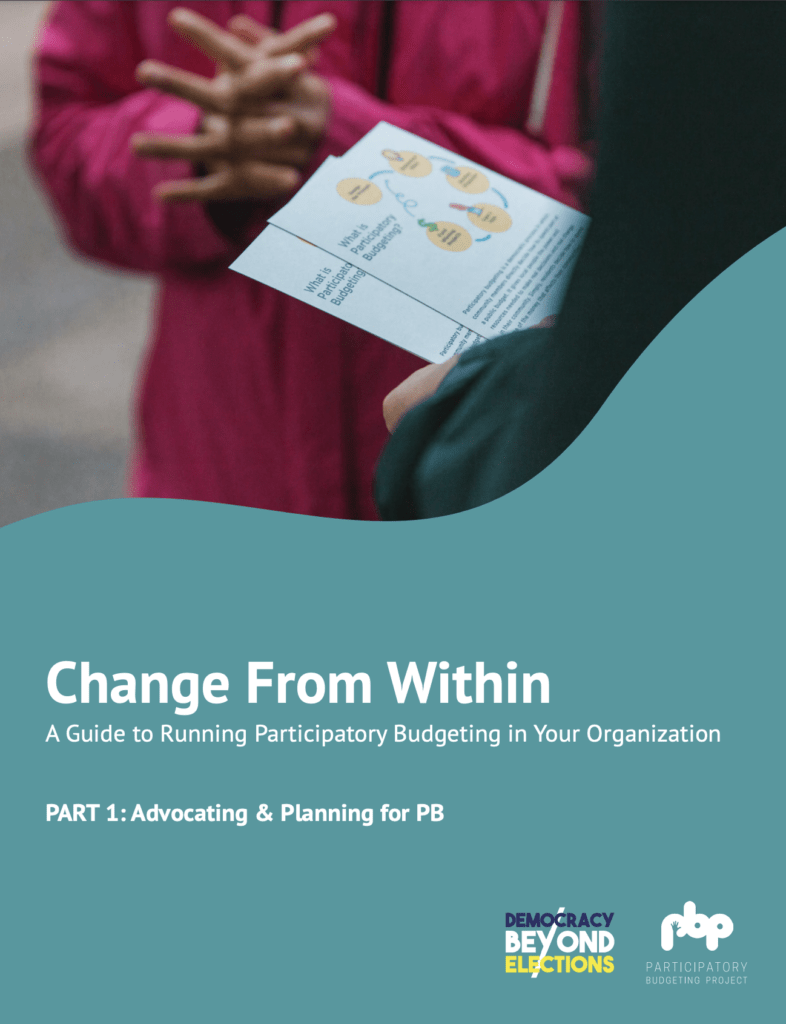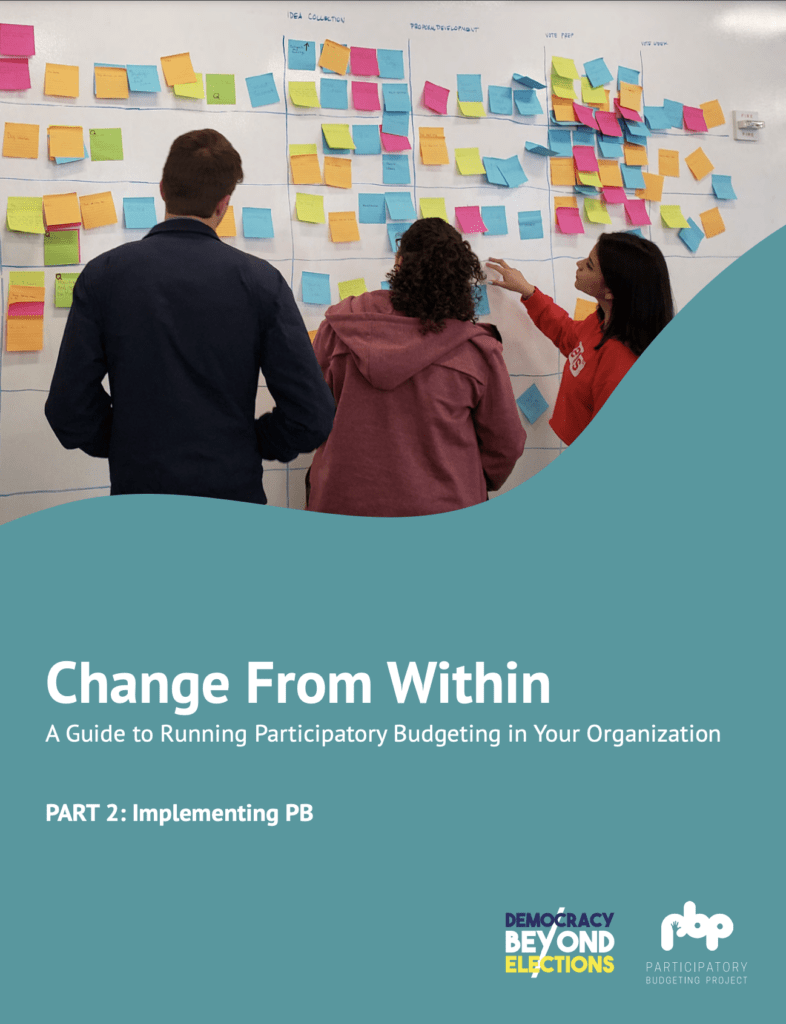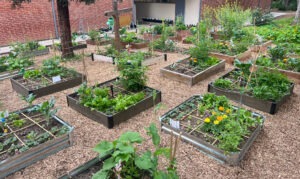Last month, we launched our latest toolkit on implementing participatory budgeting in your nonprofit organization, collective, or network. Read on to learn more about this step-by-step guide and for lessons learned from our co-presenters!

On Thursday, June 23rd, we brought together 70+ people across nonprofit organizations, collectives, and networks for the launch of Change From Within: A Guide to Running Participatory Budgeting in Your Organization! PBP was joined by Salimah Muhammad and Elizabeth Wright from the Highlander Center as well as Devin Ruiz and Isabela Villareal from Next Up to talk about our experiences with our internal PB processes.
PBP’s Director of Community Education, Ingrid Haftel kicked us off by sharing the impetus for our PB for Orgs work: a desire from our partners for tools to practice participatory democracy within their organizations and then advocate for its benefits in their communities. One of these tools is, of course, participatory budgeting — a democratic process in which community members directly decide how to spend part of a budget. Through showing us a ladder of budget participation, Ingrid shed light on how PB shares decision-making power and ensures full participation within a group — in this case, the staff, volunteers, board members, and other stakeholders that make up an organization.
Ingrid then took us through Change From Within, our latest toolkit on implementing participatory budgeting in your organization. The guide is split into two parts: Advocating & Planning for PB, and Implementing PB. With sample scenarios, FAQs, and an appendix full of templates and resources, these resources take you through each step of a PB process and prepare you to bring the principles and brass tacks of PB to your organization.


We then shifted to learning from voices in the field about their PB processes, starting off with our very own Kristina Banks, Co-Executive Director and Kayla Knight, Technical Assistance Project Manager.
PBP’s participatory budgeting process – aptly called PB^2 – has allocated over $185,000 over 25 projects since its inception in 2012. These funds come from a set percentage of individual donations within a fiscal year. Kayla shared some of the challenges PBP has faced over the past 10 years, including ensuring sufficient staff capacity to implement winning projects and aligning PB^2 projects with the overall organization’s strategic goals. These have been addressed through ensuring strong staff engagement in the proposal development process and developing an understanding across the organization’s various teams of how a PB process works. Even beyond PB^2, Kristina shared how PBP strives to infuse PB values into the broader organization by creating opportunities for team members to be involved with decisions and/or lead projects outside of their roles.
Next, we heard from Salimah and Elizabeth from the Highlander Center, a catalyst for grassroots organizing and movement building in Appalachia and the U.S. South. They talked us through the three stages of their PB process: Learning & Discovery, Visioning & Planning, and Implementing & Assessing. The PB committee started off by determining the parameters within which the organization would adopt PB and discussing staff’s needs for financial literacy to effectively engage in the process. “Through that learning and discovery…we realized that not everybody was on the same page,” notes Salimah. “Coming in as a CFO, I had to realize that this was an opportunity, a great opportunity to share my language with the whole entire organization…I had to start off by actually talking budget, talking financials, talking [about] how the process is currently.”
We rounded out our presentations with Devin and Isabela from Next Up, which amplifies the voice and leadership of diverse young people to achieve a more just and equitable Oregon. Next Up participated in our inaugural PB for Orgs cohort, and is now in the middle of planning its first PB process. What does Next Up see in PB? “We truly believe PB will help us accomplish a values-aligned, deeper form of youth leadership within our organization, centring those most impacted,” said Isabela. “We also believe this will help meet our goals by breaking down silos, bringing more of our base into decision-making and creating a budget that better reflects our communities.” Given Next Up’s youth focus, Isabela shared valuable insight into ensuring youth are engaged in a PB process. This includes ensuring meetings involve interactive activities that give youth a sense of ownership and recognizing that unpaid participation in the process presents an economic barrier. Next Up addresses this by paying its Steering Committee members an hourly wage and providing gift cards to incentivize attendance at meetings.
We then had a chance to participate in a cafe-style breakout session, where participants had an opportunity to move between breakout rooms and connect with both the presenters and each other – sharing insights, asking questions, and learning together!
We are so grateful to our partners for sharing the lessons learned from their PB journeys with us. We hope the launch of this toolkit encourages you to consider how participatory budgeting can benefit your organization by sharing decision-making power, fostering leadership development, and helping us practice the kind of democracy we want to see in the world.
You can watch the recording of the event here and download the toolkit for free here. You can also learn more about our partners for the event, Highlander Center and Next Up.
To receive the latest news on our PB for Orgs work, sign up for PBP’s newsletter!




